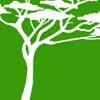Source:
SSA
Description:
Unarmed evergreen or deciduous trees. Leaves paripinnate; leaflets in one to many opposite pairs, +/- markedly asymmetric basally, venation prominent on both surfaces, translucent dots often present but sometimes 0; petiolules usually twisted; stipules intrapetiolar, always connate below, bicuspidate above or with 2 relatively large foliaceous lobes simulating free stipules, +/- persistent or rapidly deciduous. Inflorescence a terminal usually much-branched panicle. Flowers bisexual, irregular; bracteoles 2, well developed, valvate, completely enclosing flower buds, persistent, keeled down back. Sepals 5, well developed, equal or nearly so in length, ciliate; calyx tube 0. Petals 5, equal or nearly so in length, all subequal and well developed, 1 large and 4 small, or all small. Stamens 10, fertile; 9 filaments shortly united below, the tenth free. Ovary very shortly stipitate, densely pubescent; stipe free; ovules up to 5; style elongate; stigmas capitate, abruptly enlarged. Pod compressed, 1-seeded, elastically dehiscing into 2 woody valves; valves obliquely transversely nerved; upper suture usually with a laterally projecting wing or ridge. Seed compressed, exareolate, with a hard testa, borne on short funicles. x= 12.
Distribution:
Species +/- 8, all in tropical Africa; 1 in sthn Afr.: Julbernardia globiflora (Benth.) Troupin, Namibia (Caprivi Strip) and Botswana.
Classification:

Add new comment